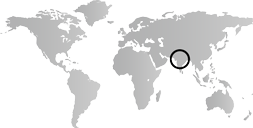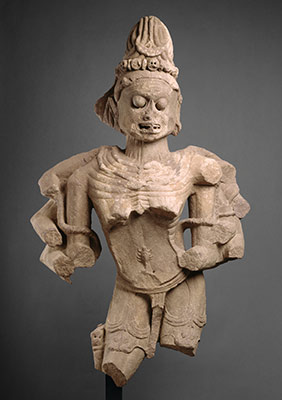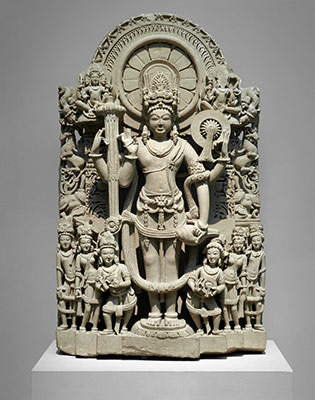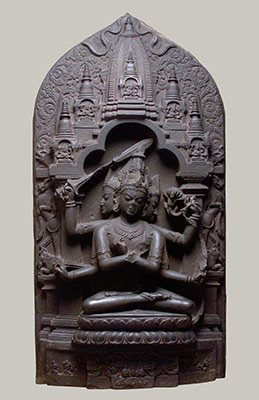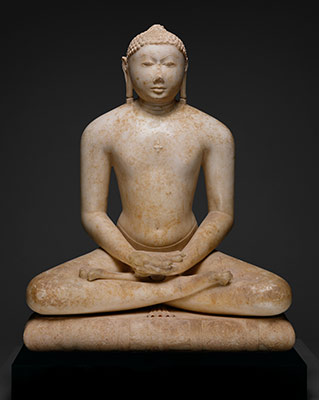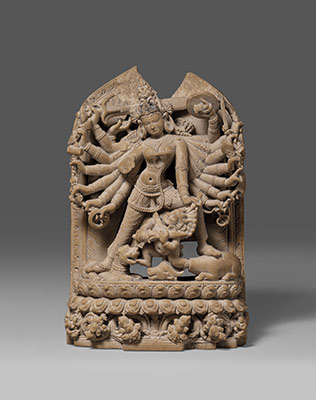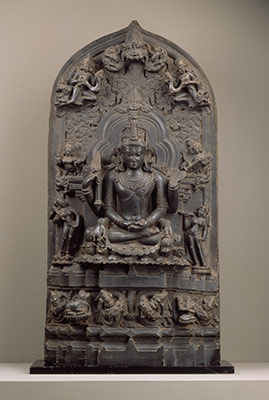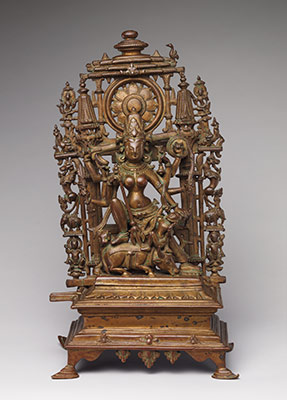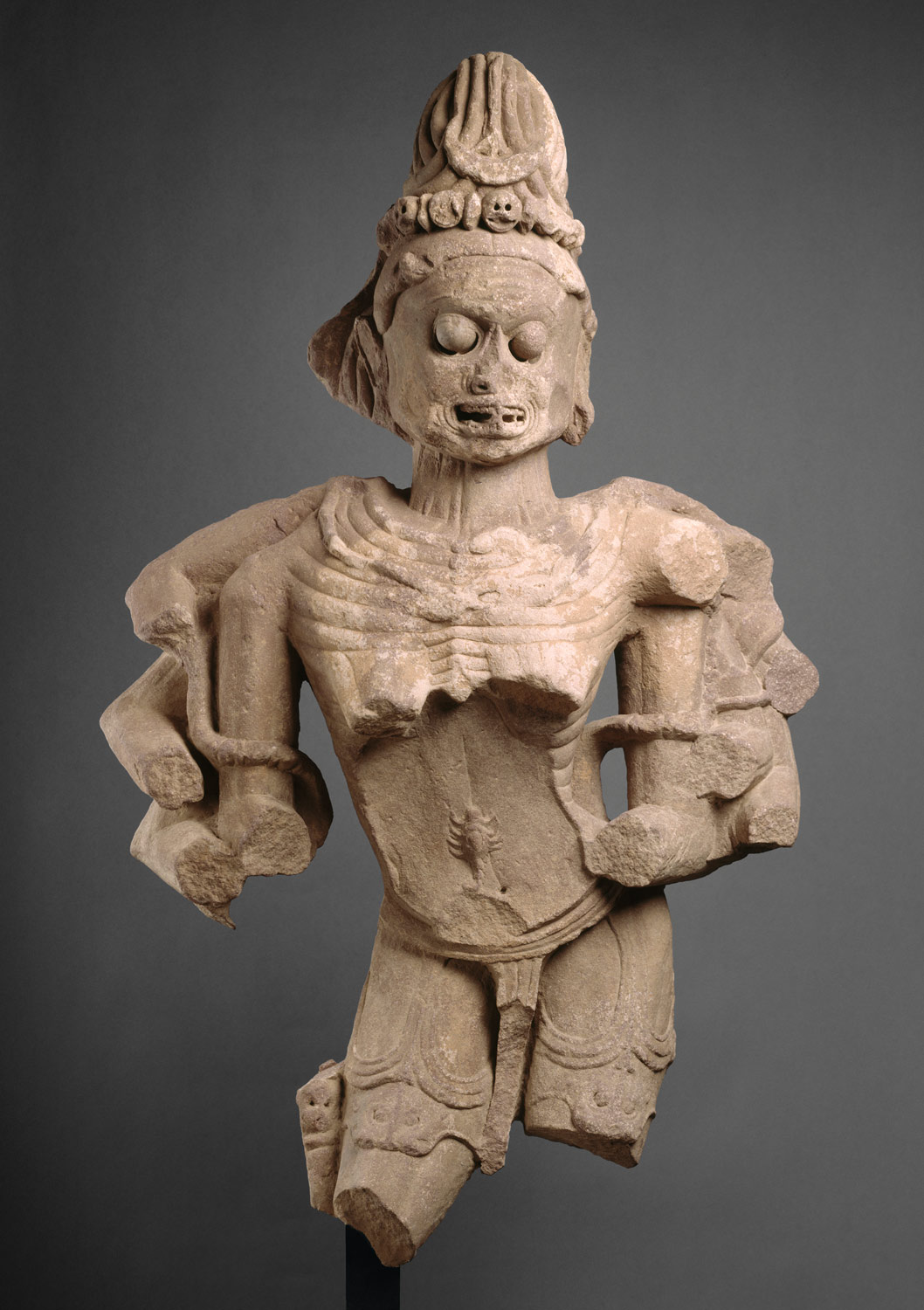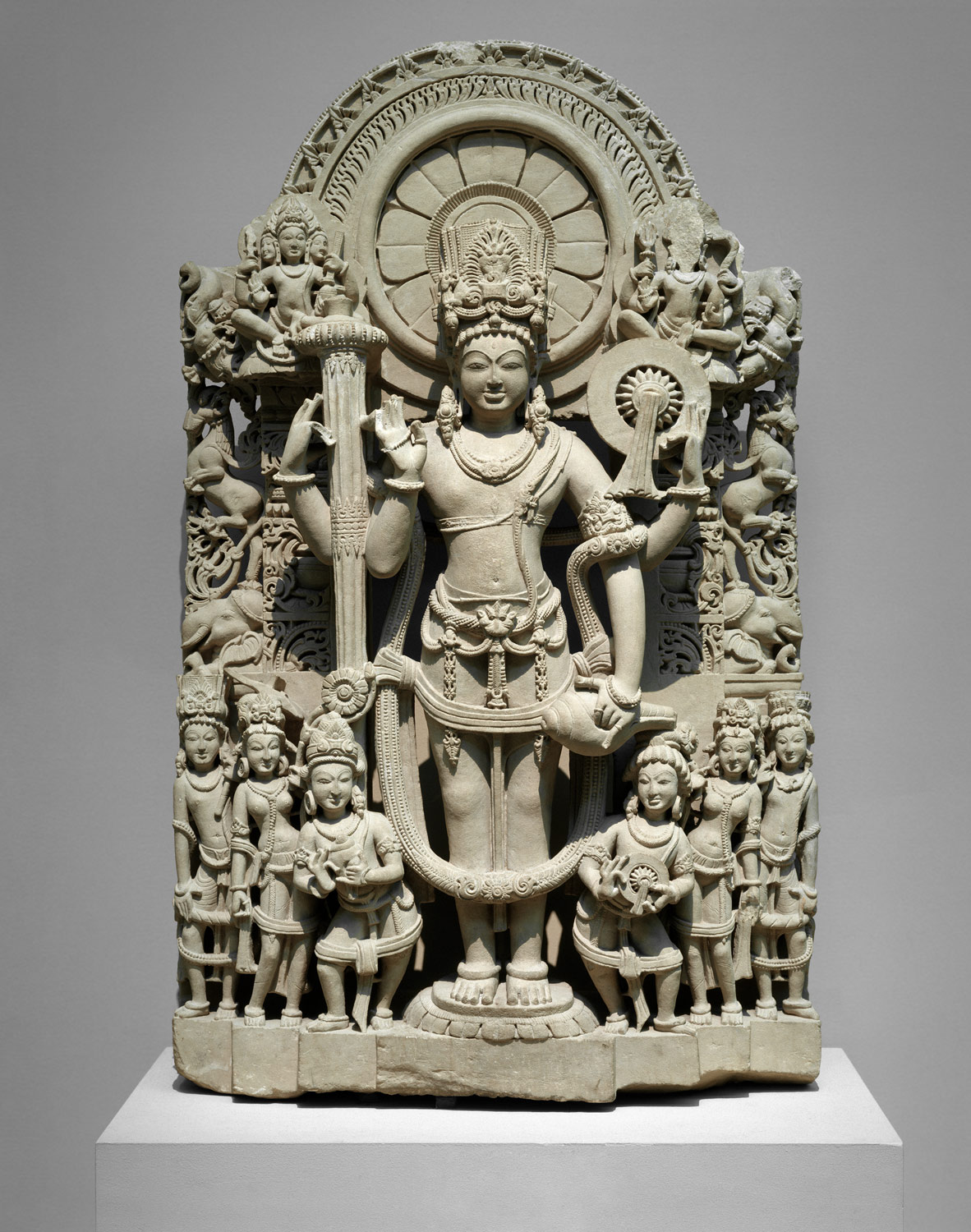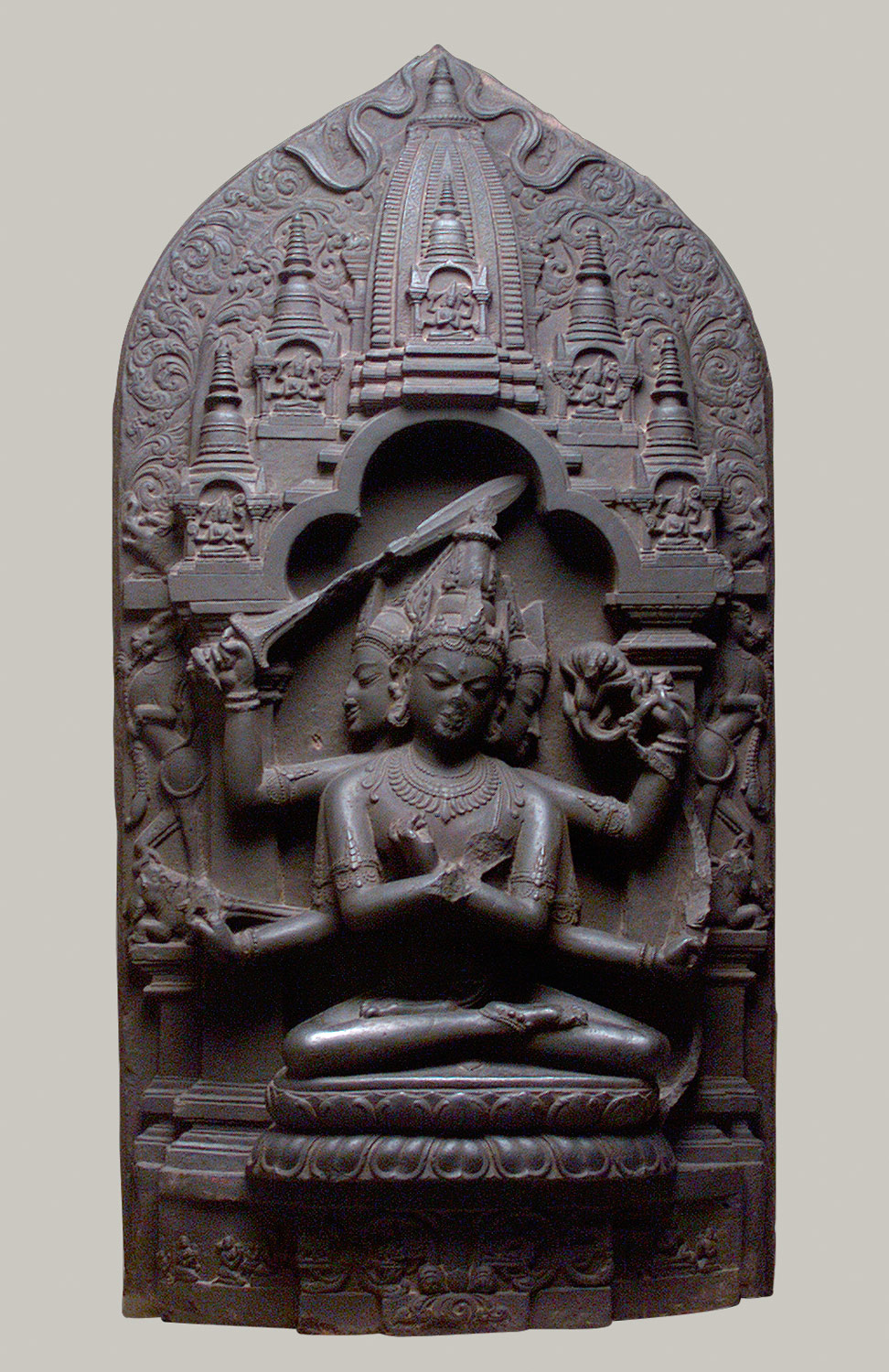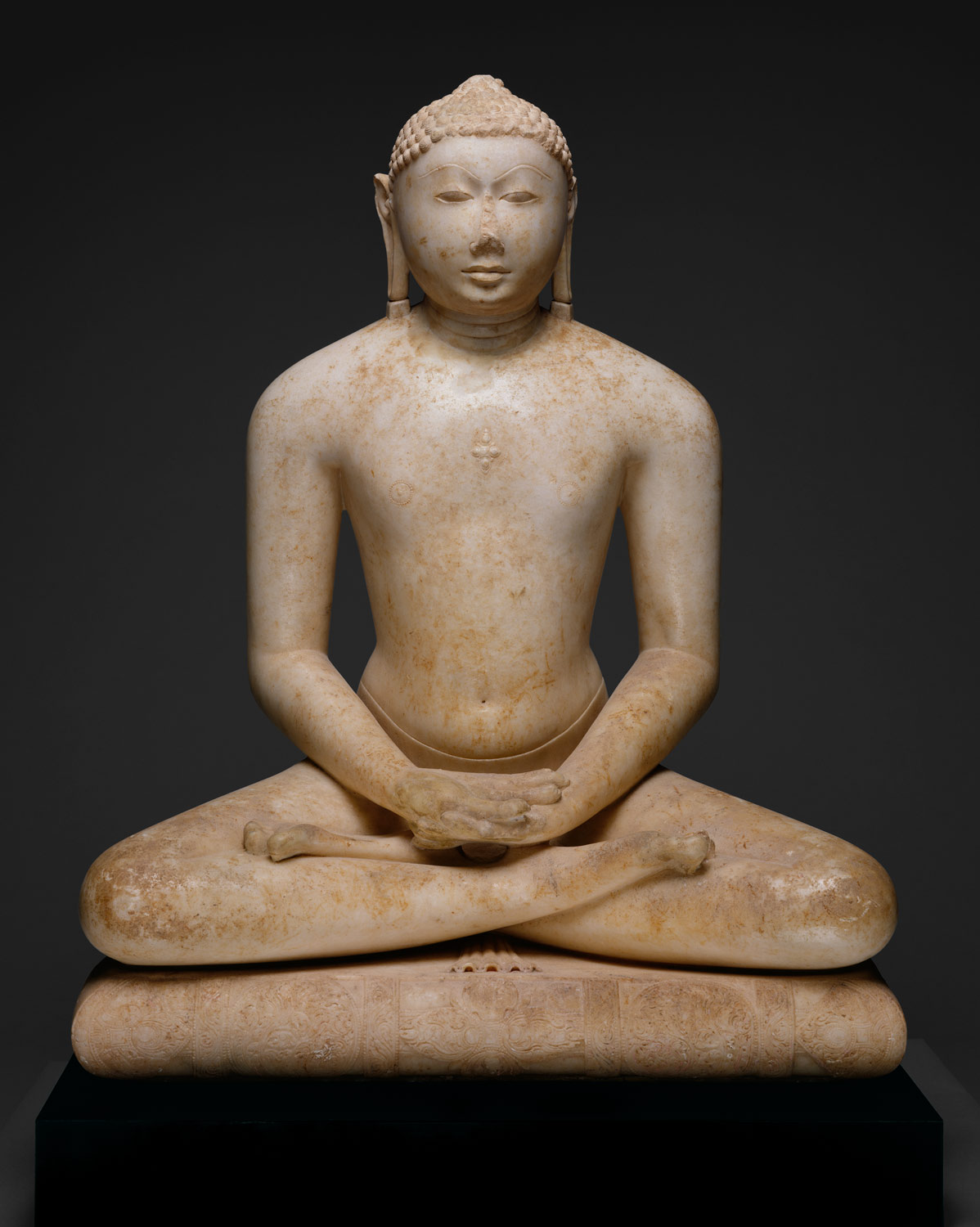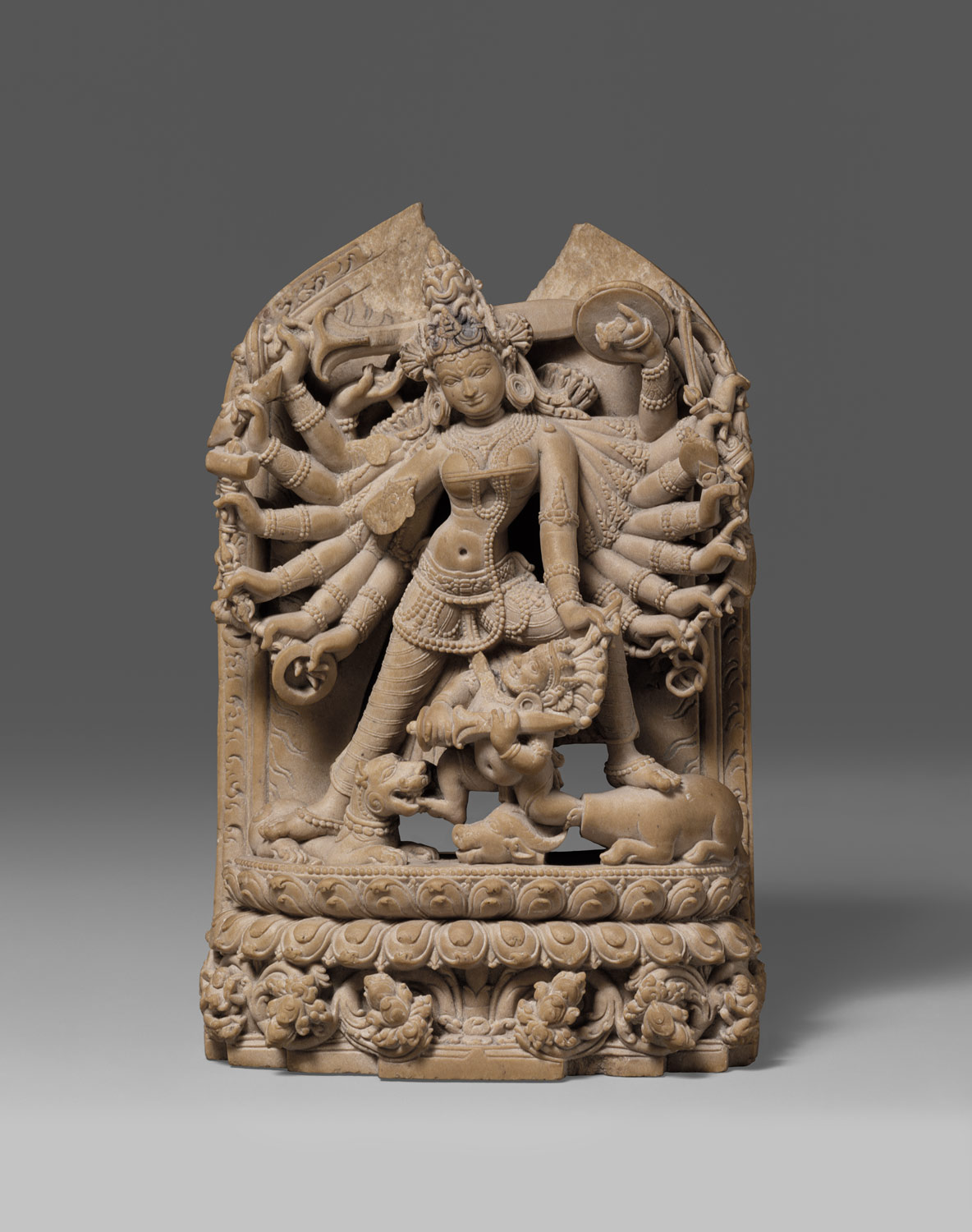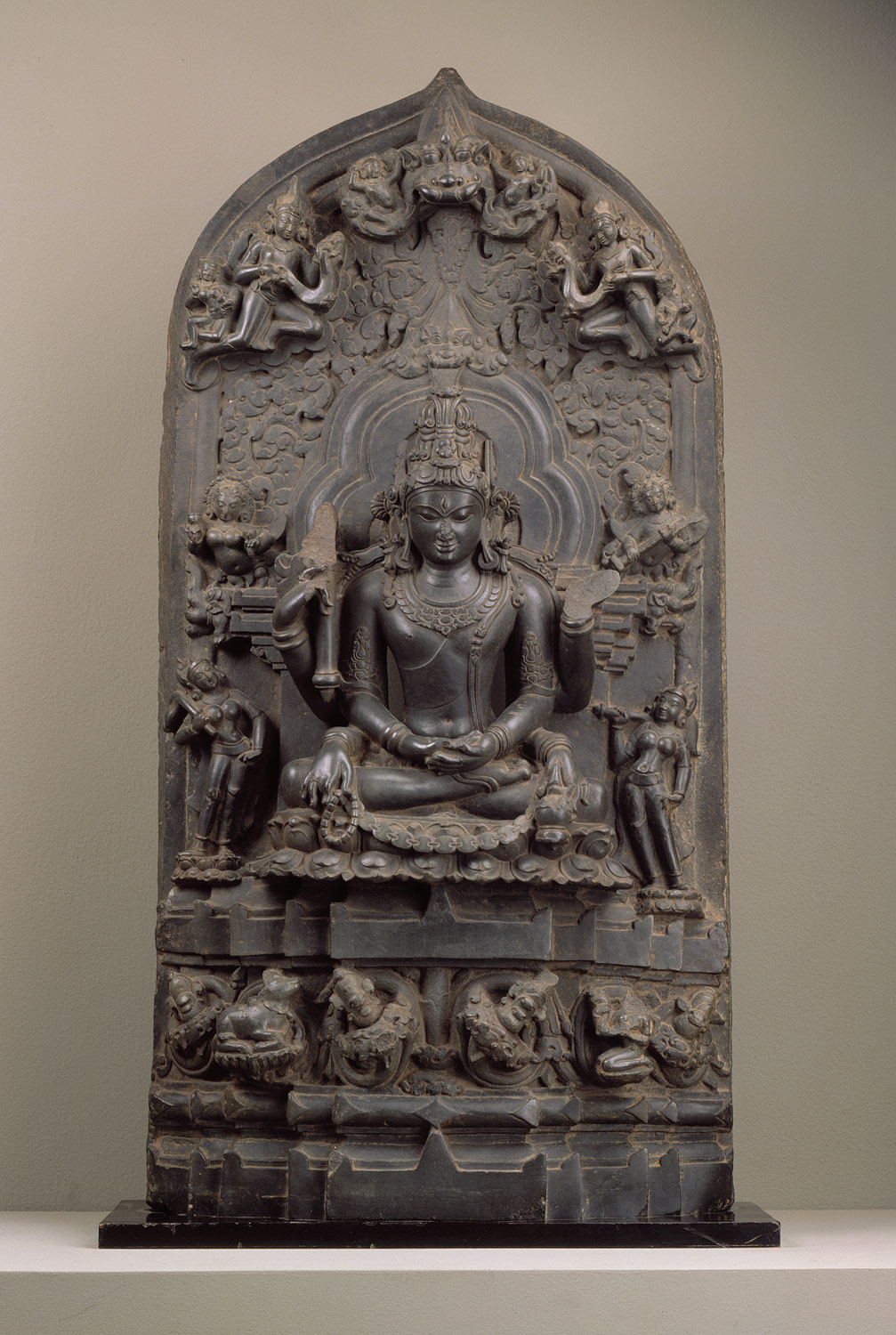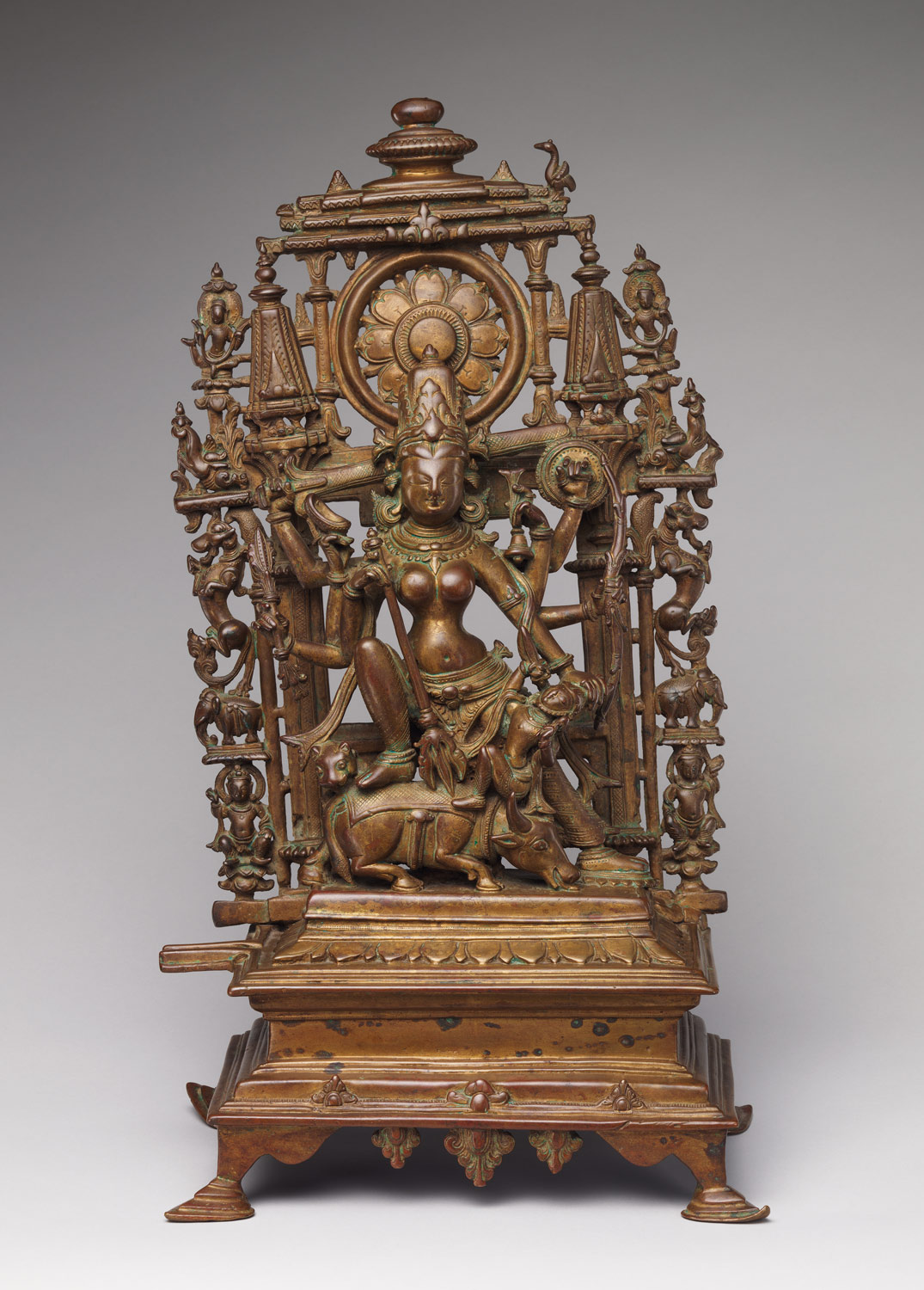Buddhism fades as a powerful force in most parts of the north, while Islam finds its place within the South Asian cultural and religious landscape. Sanskrit learning reaches new heights in peripheral areas like Kashmir, while central seats of power in the north are occupied increasingly by rulers of West and Central Asian descent. Hinduism flourishes even as some major religious centers are destroyed. Independent regional kingdoms retain their sovereignty in what are now Rajasthan, Nepal, and South India.
South Asia: North, 1000–1400 A.D.
Timeline
1000 A.D.
1100 A.D.
1100 A.D.
1200 A.D.
1200 A.D.
1300 A.D.
1300 A.D.
1400 A.D.
Overview
Key Events
-
ca. 1000
Lingaraja and Rajarani temples are constructed at Bhubaneshwar on the eastern coast of Odisha.
-
ca. 1000
In Kashmir, philosopher Abhinavagupta expands on the theory of rasa, building on earlier work first articulated by Bharata in the fourth century in the Natyashastra (“the science of dance”). A basic component of Indian aesthetic theory, rasa (“flavor”) refers to the emotional and aesthetic experience incited by performance, poetry, and art. There are nine types of rasa: shringara (the erotic), hasya (the comic), karuna (the compassionate or pathetic), raudra (the angry), bibhatasa (the unappealing), vira (the heroic), abhuta (the awe-inspiring), bhayanhaka (the terrifying), and shanta (the peaceful). Experiencing the flavor of a work of art requires not only that the work evoke a response, but also that the experiencer possess the aesthetic sophistication and knowledge required to respond in an appropriate way. The experience of a work of art is thus a process of exchange.
-
1000 onward
The Hindu Shahi state is absorbed into the expanding Ghaznavid empire, based mainly in present-day Afghanistan. Raids by Mahmud of Ghazni (971—1030) plunder North India in the eleventh century, destroying Kanauj, the celebrated capital of the Gurjara-Pratihara empire, in 1019, and preventing the centralization of authority in one ruler’s hands. Power is contested among Chandellas, Palas, and later Kalachuris, Chahamanas, Paramaras, and Gahadavalas.
-
ca. 1000–1020
The noted scholar al-Biruni (973–1048) spends several years in the Punjab studying Sanskrit texts. His Tarikh al-Hind (History of India) remains a primary source for the study of the subcontinent at this time.
-
ca. 1000–1250
Miniature painting emerges as an artistic genre. Paintings of this type are usually religious manuscripts. Workshops specializing in Buddhist and Jain texts are active in Gujarat, Bengal, and Nepal, while Rajasthani centers produce Hindu examples. They are noted for a linear, flat style and a limited palette.
-
ca. 1030
Ghaznavids conquer Punjab, and Islam begins to exert a powerful influence in that province. Large sections of North India are incorporated into Muslim principalities to the northwest, initiating a period of Muslim expansion across the region. The Ghaznavid state is absorbed into the Ghurid empire (based in northwest Afghanistan) in the late twelfth century, as that power extends its control across Punjab and the Gangetic Plain. The Rajput ruler Prithvi Raj Chauhan is defeated by Muhammad Ghuri in 1192; this battle is described in detail in a later Kashmiri Sanskrit text, the Prithvirajvijaya, as well as in vernacular epics.
-
1100–1200
The Gita Govinda, describing the love affairs of Krishna with the gopis (cowherd girls) and his secret love for Radha, is written by Jayadeva in the Bengali court of King Lakshmana Sena. This erotic text is read and performed by Vaishnavas as an allegory for the longing of human souls for the divine, and lays the foundation for representations of Radha and Krishna in painting from the sixteenth century onward. The twelfth century witnesses the decline of Buddhism in Bihar and Bengal, as Sena power wanes.
-
1100–1200
The Shaiva Lingayats (or Virashaivas) of Karnataka in the west demonstrate a radical devotional orientation, challenging formal and hierarchical religious systems and asserting that god is only accessible outside of formal and ritual religious contexts.
-
1100–1200
The major Jain temples at Mount Abu are built through the patronage of the Jain ministers of Solanki (Chaulukya) kings.
-
ca. 1175
Ghurid Turks defeat the Ghazni Turks in the Punjab.
-
1197
Muslim Ghuris attack the monasteries at Nalanda and Vikramashila and hasten the decline of Buddhism in India, as do further attacks around 1203. The growth of Hindu worship, centered in the home as well as temple, and the loss of imperial patronage and its major institutions also contribute to the end of Buddhism in India.
-
ca. 1200–1500
The Urdu language develops, integrating elements of Persian, Arabic, and local regional languages. Regional vernacular languages across the north come to be used for literary and devotional purposes toward the middle of the millennium.
-
ca. 1206
The Ghurid Qutb al-Din Aibak becomes the first sultan of Delhi, beginning a long line of Turkish rulers over various parts of North India. Often referred to as the Delhi Sultanate, this period ends with the conquest by the Mughals in 1526 (with a brief revival of the Delhi Sultanate under the Suris in 1540-55). Qutb al-Din’s rule commences three centuries of Turkic rule in South Asia, known as the Sultanate Period, during which a series of dynasties rule North India and parts of the Deccan and Central India.
-
ca. 1225
The Qutb Minar, a minaret—a tower from which the adhan, or call to prayer, is announced—is built in Delhi by Qutb al-Din Aibak and his successor Iltutmish. It is the tallest minaret in the world.
-
ca. 1265
Sufi saints are active across the north from the eleventh century and are thought to be largely responsible for the conversion of segments of the population to Islam. The Sufi saint Shaikh Farid al-Din (“Baba Farid”; died ca. 1265) is associated with a religious center at Pakpattan in present-day Pakistani Punjab. His verses are considered the earliest examples of Punjabi literature.
-
1303
Siri, the second city of Delhi, is built by ‘Ala’ al-Din Khilji, a great patron of the arts. The Khilji sultanate was founded by Jalal al-Din Firuz in 1290. “True,” rather that corbelled, arches are commonly used in South Asia from this period onward.
-
ca. 1333–1347
Ibn Battuta (1304–1378), renowned scholar from Tangier, resides in India and travels to China as an ambassador for Muhammad ibn Tughluq.
-
14th century
Three of the historical seven cities are founded in Delhi by sultans of the Tughluq dynasty, which follows the Khilji sultanate: Tughluqabad, Jahanapanah, and Firuzabad. Around 1327, Muhammad ibn Tughluq moves his capital temporarily to Deogiri, in the Deccan, renaming it Daulatabad. He later returns to Delhi.
-
ca. 1350
Jain painting reaches its greatest refinements in Gujarat and Rajasthan. Paintings typically illustrate sacred texts such as the Kalpasutras, and are characterized by their angular figures with protruding eyes.
-
ca. 1387
The Kalan Masjid at Delhi, a fortresslike mosque, is completed. Mosques and tombs are among the most notable architectural achievements of the fourteenth century and illustrate the growth of Islam on the subcontinent. Tombs are new to India; earlier indigenous religions practiced cremation.
-
ca. 1398
Timur, known in the West as Tamerlane (1336–1405), conquers much of North India from his base in Samarqand.
Citation
“South Asia–North, 1000–1400 A.D.” In Heilbrunn Timeline of Art History. New York: The Metropolitan Museum of Art, 2000–. http://www.metmuseum.org/toah/ht/?period=07®ion=ssn (October 2001)
Related
Map
